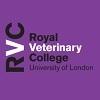Explore all the information on
Coccidiosis in poultry
Coccidiosis is a protozoal disease causing diarrhea, ,weight loss and decreased production in poultry. It can be fatal. Prevention is key and is achieved with use of anticoccidials or vaccination. Diagnosis is by fecal flotation to detect oocysts, often in combination with characteristic necropsy findings. Coccidiosis is caused by protozoa of the phylum Apicomplexa, family Eimeriidae. Most species affecting poultry belong to the genus Eimeria and infect various intestinal sites. The disease course is rapid (4–7 days) and is characterized by parasite replication in host cells with extensive damage to intestinal mucosa. Coccidia in poultry are generally host-specific, and the different species infect specific portions of the intestine. However, in game birds, including quail, the coccidia may infect the entire intestinal tract. In poultry, game birds reared in captivity, and wild birds, coccidiosis occurs worldwide.
Johan Van Erum (Galluvet) discussed live Coccidiosis vaccination, during the 1st PoultryUniverse Coccidiosis Congress in Curitiba, Brazil....
Comments : 1
Recommendations: 0
Damer Blake (Royal Veterinary College) talked about the benefit of additional antigens in the development of vaccines using Eimeria as a vector, during the 1st PoultryUniverse Coccidiosis Congress in Curitiba, Brazil....
Comments : 1
Recommendations: 3
“There is a global loss of about 2.4 billion US dollars in poultry industry alone due to coccidian infections”. Each year, over 50 billion chickens are raised as a source of meat, accounting for over one-third of...
Comments : 1
Recommendations: 5
Highlights from the conversation with Michael Kogut, Billy Hargis, Ricardo Rauber, Carlos De Oliveira and Luis Carlos Farias, who joined Fernando Vargas for this roundtable, during the 1st PoultryUniverse Coccidiosis Congress in Curitiba, Brazil....
Comments : 2
Recommendations: 2
Fiona Tomley (Royal Veterinary College) talked about several aspects regarding vaccination, including evaluation of genotypes and antigens, during the 1st PoultryUniverse Coccidiosis Congress in Curitiba, Brazil....
Comments : 1
Recommendations: 3
Highlights from the conversation with Michael Kogut, Roseline Angel, Santiago Ramirez, Sergio Luiz Vieira, Doug Korver and Luis Miguel Gomez, who joined Elizabeth Santin and Mariana Lemos de Moraes for this roundtable, during the 1st PoultryUniverse Coccidiosis Congress in Curitiba, Brazil....
Comments : 0
Recommendations: 4
Carlos De Oliveira (Vetanco) shared his experience in the field with disease challenges during egg production. This presentation took place in the 1st PoultryUniverse Coccidiosis Congress in Curitiba, Brazil....
Comments : 0
Recommendations: 1
Michael Kogut (USDA) gave a presentation on the connection between host metabolism and immunity in poultry, during the 1st PoultryUniverse Coccidiosis Congress in Curitiba, Brazil....
Comments : 1
Recommendations: 5
Doug Korver (University of Alberta) spoke on poultry diets, performance and immunity, during the 1st PoultryUniverse Coccidiosis Congress in Curitiba, Brazil....
Comments : 0
Recommendations: 3
Elizabeth Santin (Federal University of Paraná, Brazil) talked about the success of the 1st PoultryUniverse Coccidiosis Congress, held in Curitiba, Brazil, and the idea of a second edition. ...
Comments : 0
Recommendations: 2
PoultryUniverse is an academic organization created by students of veterinary medicine at Federal University of Paraná (UFPR). Our goal is to promote the poultry science inside the university and allow a strong network among students, industry and research.
In August, professionals from Brazil, USA, Canada, Mexico, Belgium, Colombia, Argentina and Australia will join us to share experiences from field and...
Comments : 0
Recommendations: 1
Dr. Greg Mathis (Southern Poultry Research) talks about the two main diseases in poultry and explains how to control them, during the 5th IHSIG Symposium on Poultry Intestinal Health in Bangkok, Thailand....
Comments : 3
Recommendations: 10
.jpg&w=3840&q=75)

Travis Schaal talks about the importance of biosecurity to prevent avian influenza outbreaks
Suggested link
Rob Patterson (Canadian Bio-Systems) explained the benefits of nucleotides in tissue recovery and cellular regeneration in broilers, as well as their combination with exogenous carbohydrases and fatty acids, during IPPE 2018 in Atlanta, USA....
Comments : 10
Recommendations: 3
Greg Mathis, President of Southern Poultry Research, explained the current challenges to prevent coccidiosis and the benefits of alternatives to antibiotics, such as plant extracts and essential oils, during IPPE 2017 in Atlanta, USA....
Comments : 3
Recommendations: 4
With the ever increasing need for animal protein sources for human consumption, the poultry industry always coped up to meet the needs at an affordable manner. The conditions in developing countries for the production of either broiler or table egg may not be entirely free of unseen losses. The following article will review briefly about such losses by gut disorders and the approaches to avoid the same. Broiler production in major countries is estimated to total 74,237,000...
Comments : 17
Recommendations: 2
...
Comments : 1
Recommendations: 6
Necrotic enteritis (NE) and avian coccidiosis are among the most important infectious diseases in commercial poultry production, both resulting in field outbreaks with substantial mortality(1–4). The aetiological agent of NE is Clostridium perfringens, a Gram-positive, anaerobic, spore-forming bacterium that is transmitted by the faecal–oral route as well as through contaminated feed, water, housing structures and insects(5–8). The worldwide...
Comments : 2
Recommendations: 3
Introduction In industrial poultry production, designing a preventive program for controlling coccidiosis is one of the most important decisions, in order to safeguard or improve zootechnical and financial results. Live coccidiosis vaccines are becoming increasingly popular, as they often provide a solution when the in-feed anticoccidials become inefficient, in fact they are able to promote the restoration of the...
Comments : 11
Recommendations: 3
A key factor in the biological performance and efficiency of food producing animals is the health of the gastrointestinal (GI) tract. A healthy GI tract ensures optimal digestion and absorption of nutrients. Within the poultry industry there are many initiatives aiming to understand gut health and how it can be influenced to improve efficiency and reduce disease. These initiatives have shown that there is a need for further characterisation of...
Comments : 2
Recommendations: 0
This article was originally published in Poultry Science (2008) 87 (9): 1760-1767. INTRODUCTION Nicarbazin (NIC) remains one of the most widely recognized anticoccidial products used by the broiler industry worldwide. For over 50 yr, the product has been known for broad-spectrum anticoccidial activity and resilience in a wide variety of commercial conditions....
Comments : 0
Recommendations: 2















.jpg&w=3840&q=75)


















